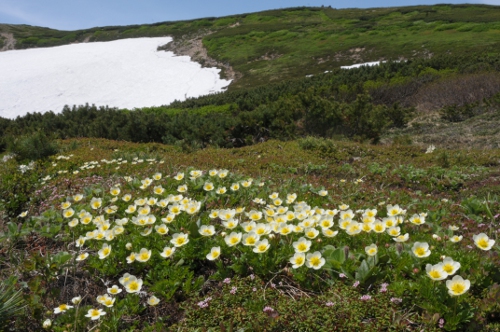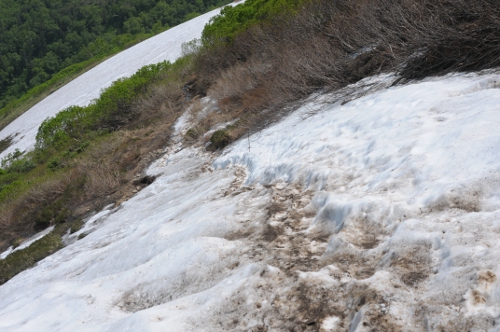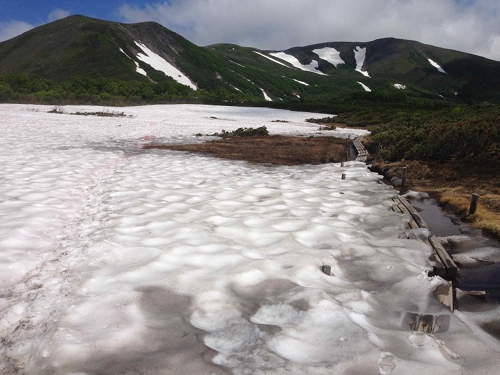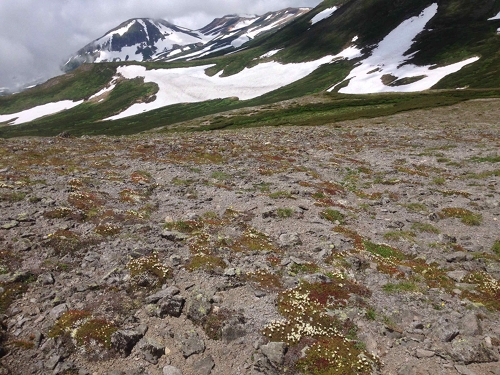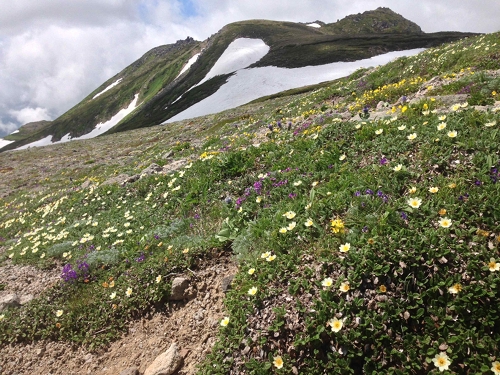On the Ginsendai-Mt. Aka course, the snow has melted considerably near Daiyon Sekkei since the last report, and each day the alpine plants are becoming more conspicuous in terms of both the varieties that are blooming and the sizes of their communities. The Rhododendron aureum and
Sieversia pentapetala are particularly numerous, and Anemone narcissiflora var. japonomonantha, Primula cuneifolia var. cuneifolia, Cassiope lycopodioides, and Phyllodoce caerulea can be seen here and there amongst them.
Around the peak, the Diapensia lapponica subsp. obovata and Dryas octopetala var. asiatica are wilting somewhat. However, the Lagotis yesoensis and other plants remain beautiful. At Komakusadaira, the Pennellianthus frutescens and Pedicularis oederi subsp. heteroglossa have started to bloom, and the Dicentra peregrina are almost in full bloom. And on the Mt. Aka course, a mixture of early-blooming and late-blooming alpine plants will be visible until around mid-July.
Now is a good time to climb, but please check the weather and snow-melting conditions before you set out.
Photo: Daiyon Sekkei, Mt. Aka Jul. 7
Sieversia pentapetala are particularly numerous, and Anemone narcissiflora var. japonomonantha, Primula cuneifolia var. cuneifolia, Cassiope lycopodioides, and Phyllodoce caerulea can be seen here and there amongst them.
Around the peak, the Diapensia lapponica subsp. obovata and Dryas octopetala var. asiatica are wilting somewhat. However, the Lagotis yesoensis and other plants remain beautiful. At Komakusadaira, the Pennellianthus frutescens and Pedicularis oederi subsp. heteroglossa have started to bloom, and the Dicentra peregrina are almost in full bloom. And on the Mt. Aka course, a mixture of early-blooming and late-blooming alpine plants will be visible until around mid-July.
Now is a good time to climb, but please check the weather and snow-melting conditions before you set out.
Photo: Daiyon Sekkei, Mt. Aka Jul. 7
